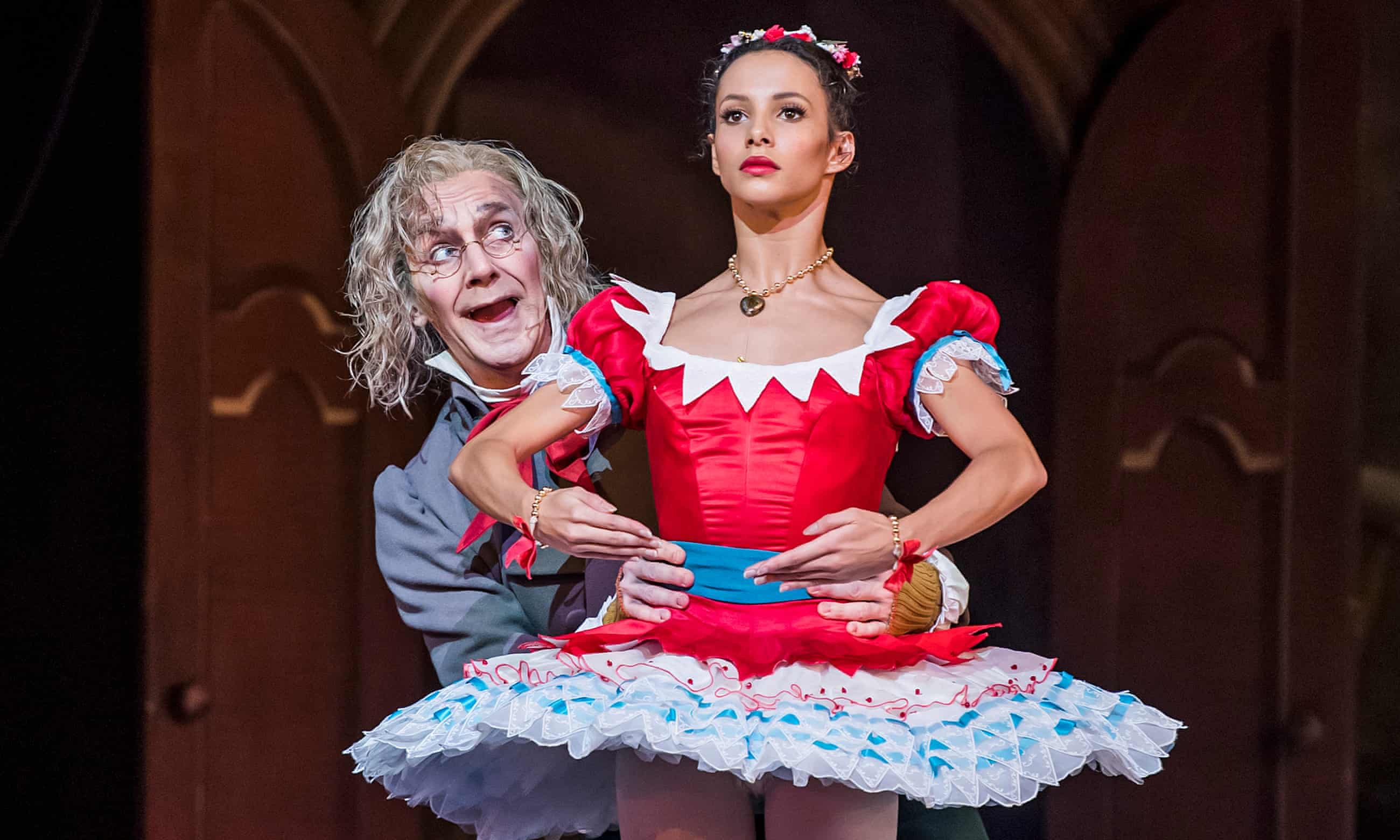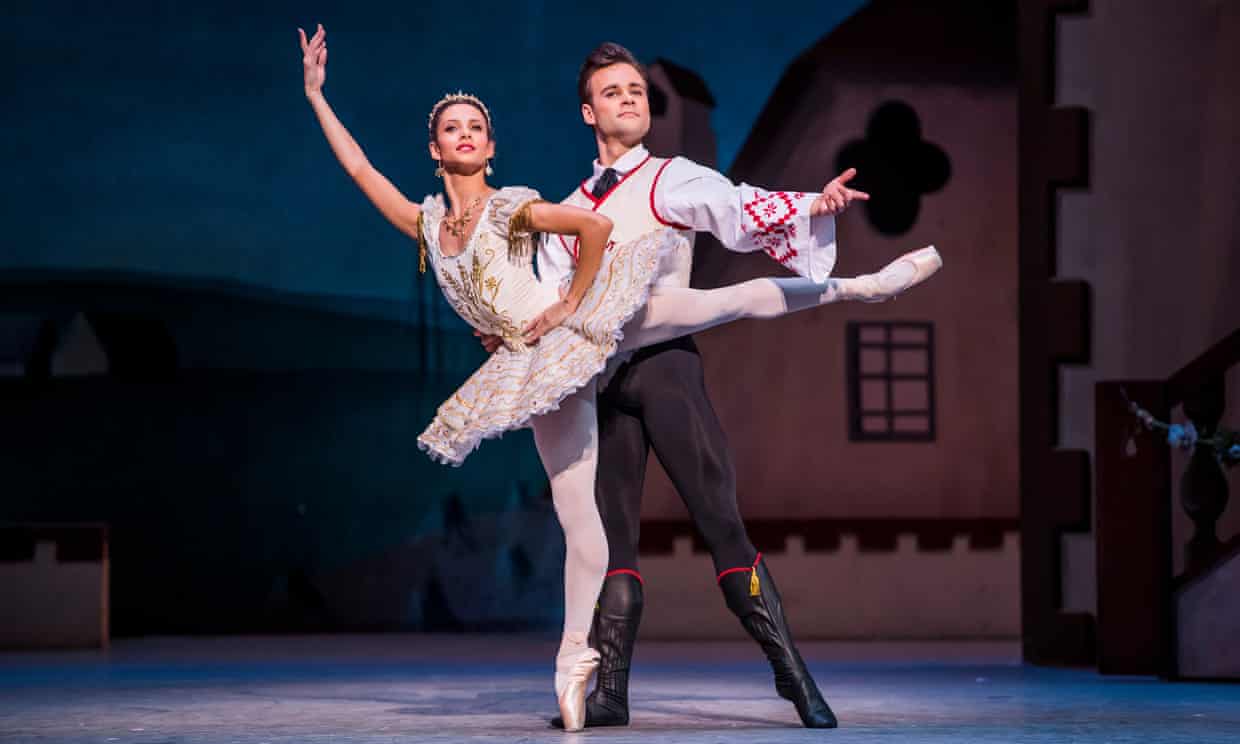
Royal Ballet: Coppélia review – hello, dolly!
by Lyndsey Winship3 / 5 stars 3 out of 5 stars. Royal Opera House, London
Francesca Hayward sparkles in this twee revival, a luminous presence in an inconsequential story about a lifesize doll
There are ballets of magical otherworldliness, of stirring drama, technical fireworks or formal daring. And then there’s Coppélia. Originally created in 1870 – this production by Royal Ballet founder Ninette de Valois dates from 1954 – Coppélia is a ballet with the thinnest of plots. Against a picturesque Germanic backdrop, Swanilda’s caddish fiance Franz will flirt with anything, even the mysteriously placid girl sitting in Dr Coppélius’s window … who turns out to be a lifesize doll. What larks!
Spread over three acts, there’s very little to work with. But if anyone could make this twee set-up worth watching it’s Francesca Hayward, a natural actor with luminous presence on stage. As Swanilda, she is spiritedly teenage, jumping down steps, huffing at Alexander Campbell’s Franz and his wandering eye, and conning Coppélius with her own doll-like act. She is full of personality – the very opposite of inanimate doll Coppélia. There should be no contest in Franz’s affections, but this is a story of grass-is-greener idealism, the “perfect” woman versus a feistier reality.

The good thing about the lack of plot is that it leaves lots of space for dancing, and it really is Swanilda’s show. This is not a role of spectacle but one of exacting footwork and attention to detail. She has little party pieces, hopping on pointe or balancing for an age as Campbell slowly rotates her. Hayward also has comic chops, but the story is too cutesy to elicit belly laughs.
Meanwhile, poor Franz spends most of the second act passed out on a table. The fact he’s drugged while Coppélius tries to take away his very life force should perhaps engender a greater sense of peril. Gary Avis’s Coppélius is not as lecherous as in some productions, just mildly creepy, mostly comical and certainly nowhere near as sinister as the original inspiration, ETA Hoffmann’s The Sandman.
Last staged in Covent Garden in 2006, this anachronistic ballet has been revived as an alternative to a Christmas Nutcracker, and some elements may appeal to children. But it is irritatingly inconsequential, even though Hayward sparkles in everything she does.
- At the Royal Opera House, London, until 7 January.